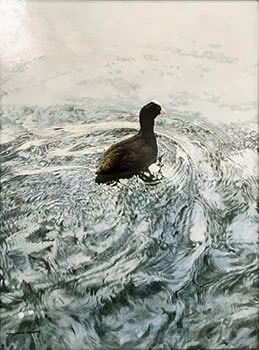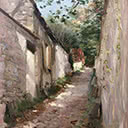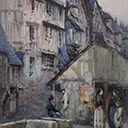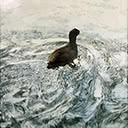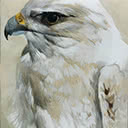Coot
49 x 35.5 cm
est. $15,000 - 25,000
PROVENANCE
Collection of Dame Kiri Te Kanawa
Purchased from Tryon Gallery, London
Original Tryon Gallery Label affixed verso
ILLUSTRATED
p. 131 New Zealand Birds - An Artist's Field Studies, Paintings Drawings & Text by Raymond Ching Graham Turbott Esq,
Reed Methuen 1986
In New Zealand, Australian Coots, Fulica atra, more closely resemble the Dusky Moorhen than any other bird seen. They are slightly larger and, instead of red and yellow on the bill, show a quite distinctive whitish bill and frontal shield. Otherwise Coots appear black from any distance but are in fact coloured a dullish, but attractive, dark grey. Coots also lack the white undertail feathers conspicuous in moorhens and the Pukeko. At closer range the bird's blue-grey feet and toes, with their curiously shaped lobes, may be seen. The first records in New Zealand of this species date from the last quarter of the nineteenth century, since when their numbers have been slowly increasing. The birds are, however, even today, nowhere common, although flocks of between fifty and a hundred are not unknown. Several species of coot range over much of the world and ours, F. a. australis, is barely distinguishable from the European birds, which over much of their range are quite commonly seen and very successful birds. Coots are thoroughly aquatic and, unlike the Dusky Moorhen, will spend much time well out in the open on large bodies of water. Their diet is made up of insects and a variety of water weeds. The birds hide their large, floating nests away among tall reeds, into which will be laid a clutch of seven to nine palish eggs, spotted grey-brown.
Text p. 130 New Zealand Birds - An Artist's Field Studies, Paintings Drawings & Text by Raymond Ching Grahama Turbott Esq, Reed Methuen 1986

